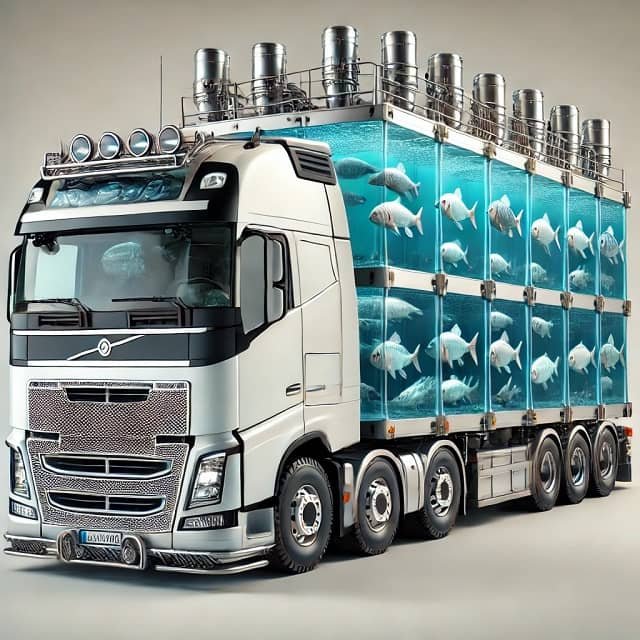
The Rearing of Atlantic Salmon Relies Heavily on Maintaining Optimal Dissolved Oxygen (DO) Levels in Open-Sea Cages to Ensure Fish Welfare and Growth. However, the dynamics of DO in these environments are complex and influenced by a multitude of factors that interact and combine to create a challenging management scenario. Effectively managing DO levels requires a thorough understanding of the DO supply to the cages and its consumption within them.
A study published by researchers from the Norwegian University of Life Sciences and Bio Marine AS delves into the key aspects of DO supply and consumption in these environments, highlighting the importance of understanding these dynamics for effective management and fish welfare. The review aims to provide a comprehensive overview of the factors influencing the supply and consumption of dissolved oxygen in open-sea salmon cages. By synthesizing existing knowledge and presenting it in a causal diagram, this work offers a framework for analyzing the complex interactions between these factors.
DO Dynamics
DO is essential for the survival and growth of aquatic organisms, including Atlantic salmon. When DO levels are too low, fish experience stress, reduced growth rates, and impaired immune function. In severe cases, low DO levels can lead to mass mortality events. Conversely, excessive fluctuations in DO can disrupt the delicate physiological balance of the fish.
In this regard, the DO balance in open-sea cages is a delicate interplay between supply and consumption. Factors such as sea temperature, currents, and stratification significantly affect the DO supply to the cages. Meanwhile, fish size, health, metabolism, biomass density, and distribution influence the rate of DO consumption.
These factors are interconnected and can interact in complex ways, making it challenging to predict and manage DO levels. For instance, higher water temperatures can reduce DO solubility, while increasing fish biomass can create greater oxygen demand. Additionally, stratification can limit oxygen exchange between surface and deeper waters, further exacerbating dissolved oxygen depletion.
Dissolved Oxygen Consumption
DO consumption within cages is influenced by various biological and physiological factors, including fish size, health, and metabolism. Larger fish, for example, require more DO to support their metabolic processes, while unhealthy fish may consume more DO due to increased energy expenditure. Biomass density and distribution within the cage can also affect DO consumption, as higher densities may result in greater competition for oxygen.
Factors Influencing DO Demand and Supply
- Fish Physiology: The metabolic rate of salmon, which determines their oxygen demand, varies with factors such as size, temperature, and activity level.
- Environmental Conditions: Temperature, salinity, and water flow influence the amount of oxygen that can dissolve in water.
- Cage Design and Management: Cage size, stocking density, and feeding practices can affect oxygen consumption and distribution within the cage.
- Biological Factors: The presence of other organisms, such as algae and bacteria, can impact DO levels through photosynthesis and respiration.
Interactions and Cumulative Effects
DO supply and consumption in open-sea cages are influenced by a complex set of interacting factors that accumulate to create a challenging management scenario. For instance, changes in sea temperature can affect both the supply and consumption of DO, leading to cumulative effects on DO levels. Similarly, changes in fish size and health can influence both DO consumption and overall biomass density within the cage, further contributing to cumulative effects.
The Need for Holistic Analyses
Effectively managing DO levels in open-sea cages requires consideration of the interactions and cumulative effects among these factors. This necessitates a holistic approach that accounts for the complex dynamics of DO in the production environment. By synthesizing existing knowledge on key factors influencing DO levels, we can develop a deeper understanding of the relationships between these factors and their impact on DO balance.
Stay Always Informed
Join our communities to instantly receive the most important news, reports, and analysis from the aquaculture industry.
The Role of Sensors and Digital Technologies
The use of sensors and digital technologies is increasingly important for managing DO levels in open-sea cages. By providing real-time data on DO levels and other key factors, sensors can help farmers make informed decisions about production routines and farm configurations. Additionally, big data analysis can help identify patterns and trends in DO levels and other factors, enabling farmers to develop more effective management strategies.
Conclusion
The dynamics of DO in open-sea cages are complex, influenced by various interacting factors that combine to create a challenging management scenario. By synthesizing existing knowledge on key factors affecting DO levels, we can gain a deeper understanding of the relationships between these factors and their impact on DO balance. This knowledge can inform the development of more effective management strategies, including the use of sensors and digital technologies.
The study was funded by the Norwegian University of Life Sciences.
Contact
Evelina Veronica Christina Berntsson
Faculty of Science and Technology, Norwegian University of Life Sciences
Ås, Norway
Email: evelina.v.berntsson@nmbu.no
Reference (open access)
Christina Berntsson, E. V., Stevik, T. K., Bergheim, A., Persson, D., Stormoen, M., & Liland, K. H. (2025). Managing the Dissolved Oxygen Balance of Open Atlantic Salmon Sea Cages: A Narrative Review. Reviews in Aquaculture, 17(1), e12992. https://doi.org/10.1111/raq.12992
Editor at the digital magazine AquaHoy. He holds a degree in Aquaculture Biology from the National University of Santa (UNS) and a Master’s degree in Science and Innovation Management from the Polytechnic University of Valencia, with postgraduate diplomas in Business Innovation and Innovation Management. He possesses extensive experience in the aquaculture and fisheries sector, having led the Fisheries Innovation Unit of the National Program for Innovation in Fisheries and Aquaculture (PNIPA). He has served as a senior consultant in technology watch, an innovation project formulator and advisor, and a lecturer at UNS. He is a member of the Peruvian College of Biologists and was recognized by the World Aquaculture Society (WAS) in 2016 for his contribution to aquaculture.




